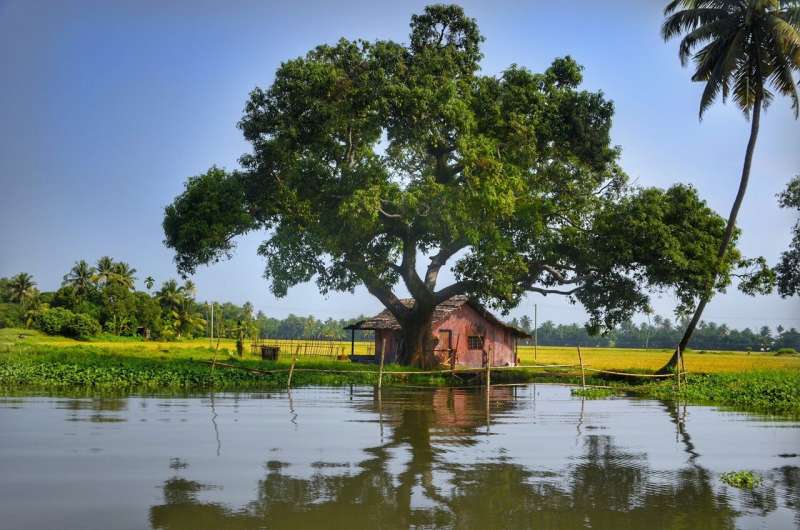This article has been reviewed according to Science X's editorial process and policies. Editors have highlighted the following attributes while ensuring the content's credibility:
fact-checked
trusted source
written by researcher(s)
proofread
Researchers: India's new manual for water supply will replicate past failures

Water utilities in India supply residents with water for an average of only four hours per day. Within cities, some neighborhoods receive water almost all the time, while some receive less than half an hour per week.
Intermittent supply of water inconveniences everyone and often disproportionately burdens the poorest and most vulnerable. Yet intermittent water supply has been the norm in India since at least 1873.
Our research at the University of Toronto studies the social and technical causes and effects of intermittent supply in India.
Perpetuating past problems
Over the last few years, the Indian government has launched several initiatives to improve water supply systems and reduce intermittent supply. Continuous water supply keeps contaminants out of the pipes and lets users drink from the tap at any time.
In support of these new initiatives, India's Central Public Health and Environmental Engineering Organisation issued a new draft of the Manual on Water Supply and Treatment, its first update since 1999.
This manual was prepared in collaboration with the German Development Agency (GIZ), and workshopped over the summer at a national conference organized by the national Ministry of Housing and Urban Affairs. The conference was attended by water supply engineers, experts, and consultants from cities across India.
As in the previous version, the 2023 manual boldly aims to establish continuous piped water supply—a goal that still has not been achieved, nearly 25 years later. This piped water is intended primarily for indoor residential use.
We believe that this new continuous supply target is also unlikely to be reached due to two fatal flaws that are baked into the plan from the start. While continuous supply requires both a realistic projection of water demand and a realistic plan to ensure supply exceeds demand, the government of India's new initiatives are unrealistic on both fronts.
Underestimated demand
First, the manual dramatically underestimates demand, the volume of water people will try to withdraw; true demand is more than double the projections in some locations. For a system to operate continuously, the water withdrawn from the system must remain well below the maximum amount that can be conveyed from its source—if not, the system will become intermittent.
The new manual estimates the amount of water demand based on the projected number of users multiplied by the estimated amount that each person will withdraw in a day. However, these estimates are based upon 1999 figures for the minimum requirements for drinking, cooking, and bathing: 135 liters per person in most cities (150 in the country's biggest cities).
These estimates are reasonable projections of the minimum amount of water urbanites need but they grossly underestimate how much water urbanites want. Most users attempt to withdraw the water they want, rather than what they need.
The manual could and should be informed by data about user withdrawals from the last 24 years. The manual's prescriptions for calculating water demand should also consider the water wants of low-income populations in informal settlements and seasonal, interstate migrant workers.
Second, the manual's authors assume that water tariffs will be set high enough to limit users to withdrawing only the water they need. But demand-limiting tariffs have never been realized in India.
Sustaining high tariffs is particularly challenging as Indian politicians like Delhi's Chief Minister Arvind Kejriwal may use free-water services or lower tariffs as tools to earn voters' approval.
Consider, for example, water tariffs in Bengaluru, which are higher than many cities. A family of four consuming the guideline-anticipated 150 liters per person per day will be billed 8.6 rupees per day (CAD$0.14/day); if they consume 30% more than expected, their water tariffs increase by only 2.7 rupees per day (less than CAD$0.05/day).
Bengaluru's elite will not limit their consumption for Rs 3 (five cents)—which is less than the price of a cup of tea.
If the manual's anticipated high tariffs strategy for limiting demand fails, then users will withdraw more water than expected. When these higher-than-expected withdrawals exceed the system capacity, the system will become intermittent again.
Tragically, the drawbacks of intermittent supply will be magnified in these systems since the manual recommends they be designed as if continuous operation was guaranteed.
Supply and demand
Water system engineers in India are faced with two irreconcilable options: design water systems that meet only users' minimum needs and accept intermittent operations, or design systems to sustain continuous supply by providing as much water as users want.
The long history of intermittent supply in India suggests that water systems designed using need-based demands are fragile and almost always revert to intermittent operations.
If India's future systems are built according to the new manual—focused on providing users' minimum needs— these new systems will never operate continuously. When these systems inevitably become intermittent, they will operate less fairly, less efficiently and less safely than if they had been designed to operate intermittently from the outset.
The new manual's aim for continuous supply replicates the failures of its predecessor and perpetuates decades of self-defeating water supply projects.
It's a missed opportunity to design water systems that will operate well under both continuous and intermittent modes which are resilient to problematic demand projections, ineffective demand management, and water supply scarcity.
Provided by The Conversation
This article is republished from The Conversation under a Creative Commons license. Read the original article.![]()



















